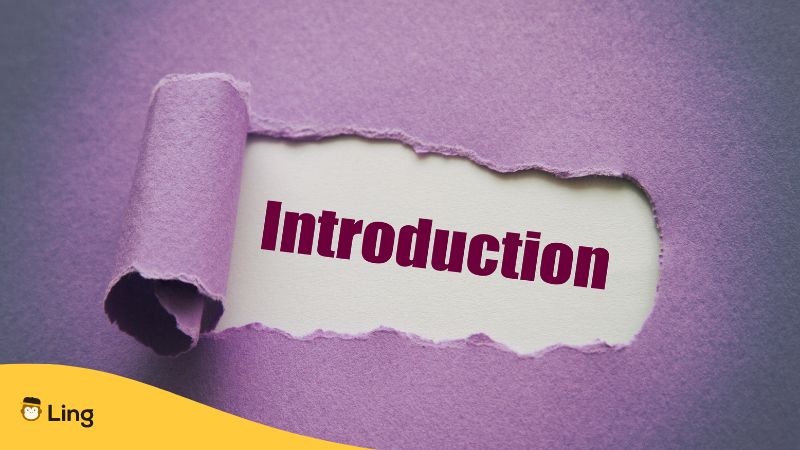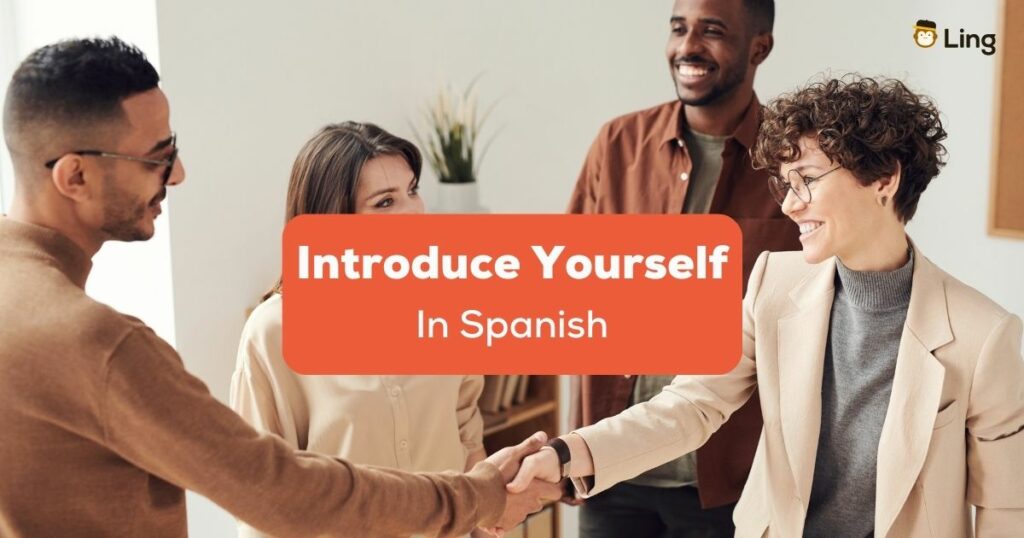Do you need to learn how to introduce yourself in Spanish? This practical step-by-step guide will help you master Spanish introductions in no time! If you are planning to travel to Latin America or Spain, learning a few phrases will help you create special bonds with native speakers.
Perhaps you are about to meet people who speak Spanish, and you would like to impress them by speaking their language. Greeting people in their own language will always give you extra points!
Introducing yourself to others is an important social activity that forges meaningful and lasting connections. It makes other people engage with you as you establish an approachable attitude by letting them know about you while acting friendly.
People exchange essential information about each other with the person they are meeting to break the ice and create a bond, whether in a friendship or a working relationship.
You will see that introducing yourself in Spanish is actually very easy. Let’s learn some phrases that will help you communicate with native Spanish speakers efficiently.
The Most Common And Simple Introductions
The following phrases can be used on any occasion when meeting new friends or people at work. They are short and cordial phrases that will be very helpful to start conversations. Among all Spanish introductions, the last one is the most common way used by the native speakers.
| English | Spanish | Pronunciation |
|---|---|---|
| Hi, I’m Carlos. | Hola, soy Carlos. | |
| Hello, my name is Carlos. | Hola, me llamo Carlos. | |
| Hello, my name is Carlos. | Hola, mi Nombre es Carlos. |
How To Introduce Yourself In Spanish: Longer Ways
It won’t always work to say, “Hola, mi nombre es….” You will frequently need to add extra information about yourself so that others get to know you better. Suppose it’s a conversation with another person. In that case, they may start asking you details about your life right after you say hello and shake hands.
You wouldn’t want to have your mind blank at that moment, right?
You need to be prepared to respond! Likewise, you may need to introduce yourself to a group of people in a monologue. The following Spanish phrases will help you know what to say at that moment.
8 Simple Steps To Introduce Yourself In Spanish
Now that you know how to introduce yourself in Spanish learn the structure of steps that will help you make an extended introduction.
It is worth mentioning that these steps are specifically for when you are making a complete presentation of yourself, perhaps to a group of people, and not in a conversation.
At the end of the blog, we will see examples of how two people introduce themselves. Now let’s learn some useful phrases!

1. Hello – ¡Hola!
The first step to introducing yourself in Spanish is the greeting. Depending on the context, the greeting “Hola” (hello) can be informal and formal.
Besides this common Spanish word to say hi, we also have different greetings known as “saludos.” See the following examples:
- “Buenos días” (good morning)
- “Buenas tardes” (good afternoon)
2. What Is Your Name – ¿Cómo Se llama Usted?/¿Cuál Es Tu Nombre?
Like in any other language, you should say your name to the person you are introducing to. Besides, depending on who you are talking to, you can also tell them your nickname.
The phrases to say your name in Spanish are as follows: “Me llamo,” “Soy,” “Yo Soy,” and “Mi nombre es.”
- “Soy Andrés.” (I am Andres.)
- “Me llamo Andrés.” (My name is Andres.)
- “Mi nombre es Andrés.” (My name is Andres.)
- “Un gusto, yo soy Andrés.(It’s a pleasure, I am Andres)
- “Mi apodo es Andy.” (My nickname is Andy.)
- “Puedes llamarme Andy.” (You can call me Andy.)
3. Where Are You From – ¿De Dónde Es Usted?/¿De Dónde Eres?
After stating your name, the next step in introducing yourself in Spanish is to say what country you are from. The following are two simple and common ways to say it:
- “Soy de Italia.” (I’m from Italy)
- “Vengo de Italia.” (I come from Italy)
4. How Old Are You – ¿Cuántos Años Tiene?/¿Cuántos Años Tienes?
- “Tengo 32 años.” (I’m 32 years old)
Suppose you are not presenting yourself in a monologue but in a conversation, and the person asks you your age. In that case, you can choose to say “Tengo 32 años,” or you can also shorten the sentence and answer “32 años” (I’m 32). You could even say only the number to make it shorter.

5. What Did You Study – ¿Qué Estudió?/¿Qué Estudiaste?
Something that people may be interested in knowing about you is your education. You can make this information known with the following sentence:
- “Estudié comunicación.” (I studied communication.)
If you know enough Spanish vocabulary, you can elaborate on this sentence further by sharing where you studied.
6. What Do You Do For A Living – ¿A Qué Te Dedicas?/¿A Qué Se Dedica?
If you are already working and are interested in letting people know about it, these two ways of saying it will be beneficial.
- “Trabajo en un restaurante.” (I work at a restaurant)
- “Soy chef en un restaurante.” (I’m a chef at a restaurant)
- “Soy chef” (I’m a chef)
7. What Is Your Hobby – ¿Cuál Es Tu Pasantiempo?/¿Cuál Es Su Pasantiempo?
Now you have the opportunity to talk about your hobbies! You can use the following Spanish phrases:
- “Uno de mis pasatiempos es leer.” (One of my hobbies is reading)
- “Me gusta escuchar música.” (I like to listen to music)
8. Nice To Meet You – ¡Mucho Gusto!
The last step will make you known as a cordial and respectful person. Just as it is customary in any other country globally, you should also say that it was a pleasure to meet the other person in Spanish.
“Mucho gusto” means “much pleasure.” It can also be translated to “pleased to meet you,” or “it’s a pleasure.”
Some synonyms for this phrase are:
- “Encantada/o de conocerle.” (Pleased to meet you.)
- “Un placer conocerle.” (Nice to meet you.)
- “Un placer.” (A pleasure.)
- “Fue un placer haberlo/a conocido.” (It was a pleasure to meet you.)
Those sentences are formal. To say the same thing in an informal setting, change the verb ending, as in the following example:
- “Encantada/o de conocerte” (Pleased to meet you – Informal)
“Conocerte” (To meet) ending in “te” represents that the phrase is informal. If it ends in “le,” it is formal.
You will notice that after the word “delighted” (pleased), I have added both the “a,” and the “o.” That denotes feminine or masculine, respectively. If you are female, you should end the word with “a,” and if you are male, with “o.” Easy!

Examples Of Introductions In Conversations
In addition to cordially greeting each other, people exchange information about their names and ages. After that, they finalize with a polite sentence that expresses how much they enjoyed getting to know each other.
The following is an example of two people greeting and introducing themselves in a formal setting.
Maria: “Hola, Buenas tardes.” (Hello, Good afternoon)
Carlos: “¡Buenas tardes!” (Good afternoon)
Maria: “¿Cómo se llama usted?” (What is your name?)
Carla: “Me llamo Carlos. ¿Y usted cómo se llama?” (My name is Carlos. What is your name?)
Maria: “Yo me llamo María. ¿Cuántos años tiene?” (My name is Maria. How old are you?)
Carla: “Tengo 25 años. ¿Y usted?” (I am 25 years old. And you?)
Maria: “Yo tengo 40 años. Encantada de conocerle.” (I am 40 years old. Pleased to meet you.)
Carla: “¡Igualmente!” (Direct translation: “Likewise.” And it conveys the meaning of “Nice to meet you too.”)
Now, let’s see the informal way of a similar conversation.
Carlos: “¡Hola! ¿Cómo estás?” (Hi! How are you?)
Marta: “¡Hola! Muy bien, ¿y tú?” (Hello! Very well, and how are you?)
Carlos: “¿Bien, gracias. Cómo te llamas?” (Okay, thank you. What is your name?)
Marta: “¿Me llamo Marta, y tú cómo te llamas?” (My name is Marta, and what is yours?)
Carlos: “Mi nombre es Carlos. ¡Mucho gusto, Marta!” (My name is Carlos. Nice to meet you, Marta!)
Marta: “¡Igualmente, un gusto!” (Nice to meet you too!)
Learning Spanish Words And Phrases!
Ling is the perfect option to establish richer interactions with Hispanic people. Forget about studying with outdated and boring books! You can now learn Spanish words daily with fun quizzes and motivational lessons. It will make you feel like you’re playing a game while learning Spanish vocabulary, grammar, and pronunciation. Yes. Learning Spanish doesn’t have to be a tedious process!
Ling is a powerful language learning app that will help you achieve the level of fluency that you need to have natural conversations with the locals. So, If you have Spanish-speaking friends, are planning a visit, or have a job in a Hispanic company, you will be grateful to have encountered Ling!
We mentioned one blog article earlier; however, if you’re looking for more material why not check out these two that have been getting a lot of clicks recently: days of the week in Spanish and funny Spanish phrases.
Download Ling from either Play Store or App Store to try a few lessons today!



































































